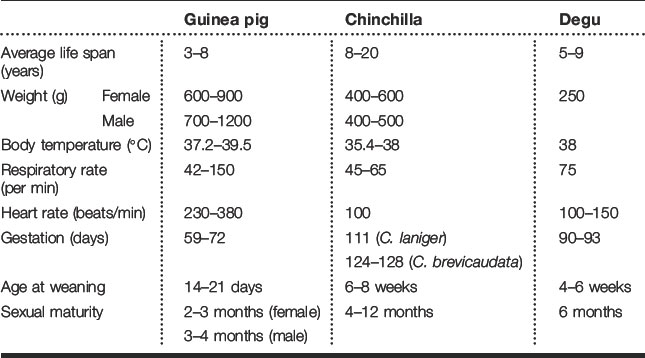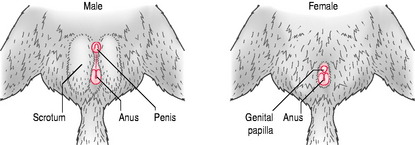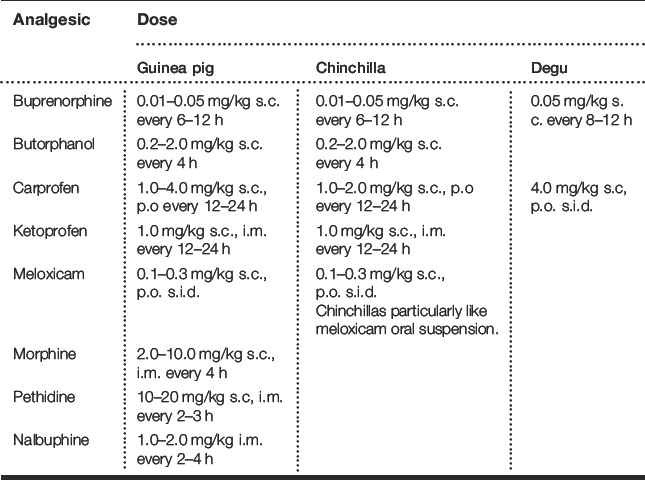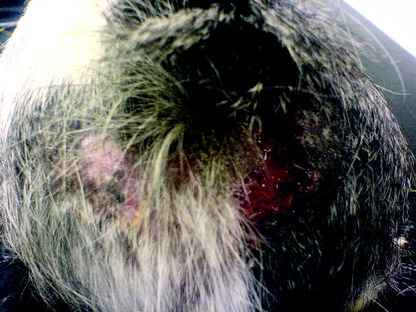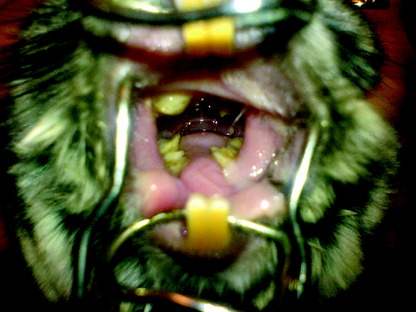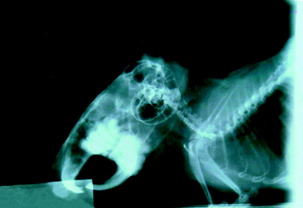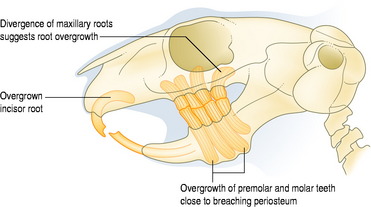Chapter 3 Guinea pigs, chinchillas and degus
Many of the pet rodents presented to the veterinarian belong to the group known as hystricomorphs. The following species are the commonest as household pets:
Consultation and handling
Although both rabbits and guinea pigs are social animals, generally the keeping of guinea pigs with rabbits is not recommended because:
Sexing of chinchillas can be problematic as the female has a pronounced genital papilla that can be easily mistaken as a penis. The vulva lies immediately caudal to this papilla (Fig. 3.1).
Nursing care
For general concepts, see Nursing Care in Rabbits.
Fluid therapy
Fluids can be given s.c., i.p. or i.o. – indeed if there is marked dehydration, then i.p. or i.o. is preferable to s.c. Fluids can be given i.v. either by bolus or by infusion and all fluids should be warmed to 38 °C. For sites for fluid administration see Table 3.
Table 3.3 Guinea pigs, chinchillas and degus: Sites for fluid administration
| Intravenous (guinea pig) | Lateral or medial saphenous and cephalic vein |
| Intravenous (chinchilla) | Femoral, lateral saphenous and cephalic vein. Ear veins can be used for i.v. in some cases, and the use of EMLA cream greatly aids this, but is inappropriate if the chinchilla is considered hypothermic |
| Intra-peritoneal (all three species) | Hold the patient vertically downward and inject into the lower left quadrant |
| Intra-osseous (all three species) | Under GA to insert either an intraosseous catheter or a hypodermic needle into the marrow of either the femur (via the greater trochanter) or tibia (through the tibial crest). Fluids, colloids and even blood can be i.o. if necessary |
Analgesia
Anaesthesia
Beware of subclinical respiratory infections. There is no need to starve; prolonged fasting can lead to hypoglycaemia.
Skin disorders
Pruritus
Alopecia
Other
Findings on clinical examination
Investigations
Treatment/specific therapy
Respiratory tract disorders
See also Cardiovascular and Haematological Disorders.
Dental disorders
Findings on clinical examination
Investigations
Management
Treatment/specific therapy
Gastrointestinal tract disorders
It is normal for guinea pigs, chinchillas and degus to coprophage, especially at night (Kenagy et al 1999).

